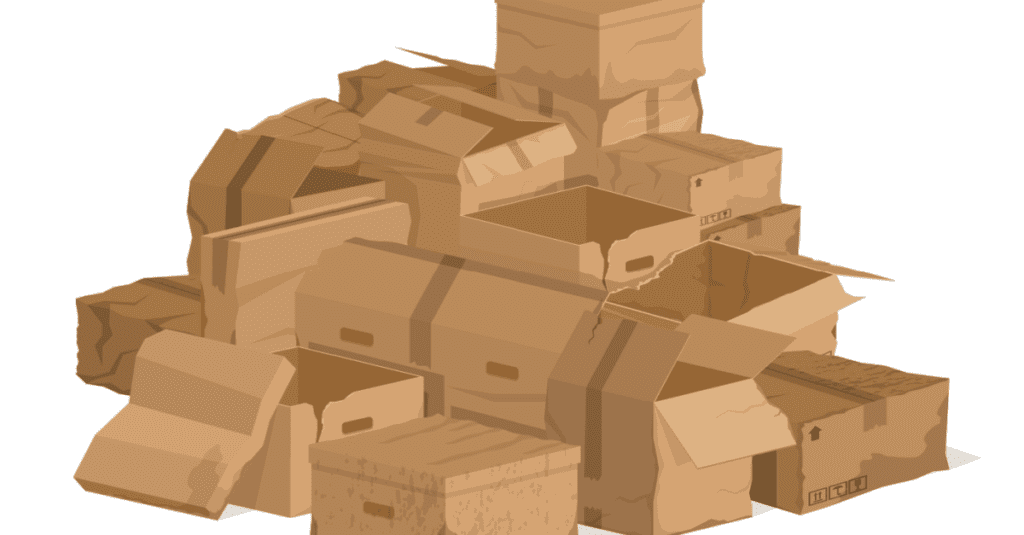The U.S. transportation system moves over 55 million tons of freight daily, valued at more than $54.0 billion. That’s a monumental amount of cargo that could potentially be lost or damaged, underscoring the critical importance of efficient and effective freight claims management.
Freight claims are essential to the logistics industry, allowing businesses to seek reimbursement for damaged, lost, or missing goods during transit. Understanding the different types of freight claims is crucial for businesses to proactively address and prevent such situations. This article explores the most common types of freight claims and provides insights into effective freight claims management. We will also introduce FreightClaims.com, a comprehensive freight claims management software streamlining the freight claims process.
Freight Claims: A Necessary Headache
Freight claims are formal legal demands by a consignee or shipper to a carrier for financial reimbursement due to loss, damage, delay, or shortage of shipments during transit. These claims are governed by various national and international laws, ensuring a fair resolution process for all parties involved. Dealing with freight claims can be a headache, but they don’t have to be. They serve as a protective measure for shippers, guaranteeing compensation for any loss or damage during transit.
By proactively understanding and addressing freight claims, businesses are in a better position to recover losses and prevent financial setbacks. In an industry with tight margins, streamlining freight claims management can be the key to maintaining low costs and optimizing profitability.
The Most Common Types of Freight Claims
In the intricate world of logistics, shippers rely on freight claims to provide a safety net, ensuring compensation for any loss or damage that may occur during transit. Understanding the most common types of freight claims can help businesses better navigate this often-complicated process and implement effective strategies to prevent such issues. Here, we’ll explore the four most common types of freight claims: Damage Claims, Loss Claims, Shortage Claims, and Concealed Damage or Shortage Claims.
Damage Claims
Damage claims are, unfortunately, a frequent occurrence in the shipping industry. These types of claims occur when goods arrive at their destination visibly damaged. This damage could result from various factors, including improper packaging, traffic collisions, transportation mishandling, failure to mitigate damage, or loading and unloading accidents.
For example, a shipment of glassware might arrive at its destination with multiple broken items due to inadequate packaging. In this case, the shipper could file a damage claim to seek compensation for the broken goods.
Businesses looking to avoid damage claims during shipping should implement the following measures:
- Utilize proper packaging that fits the product and protects it adequately during transit.
- Label packages correctly, indicating fragile items, proper orientation, and hazardous materials.
- Implement regular quality control checks (especially at pick up and delivery), including packaging inspection, documentation verification, and shipment tracking.
- Build solid relationships with your carriers, which can go a long way in preventing damage claims. Reliable carriers will handle your products with care and communicate any issues promptly. Conversely, shippers should also identify which carriers they do not wish to work with based on past experiences or other relevant data. Regularly review your carrier’s performance and address any concerns immediately.
Productivity can suffer due to the time spent filing claims and inspecting damaged items. Additional costs accrue from storing these items, considering factors like property taxes, utilities, and rent or mortgage. Furthermore, shippers risk damaging their reputation by being associated with delivering damaged goods.
Loss Claims
Loss claims are an unfortunate reality in the logistics industry, where goods sometimes fail to reach their intended destination. These claims can arise from various circumstances, such as theft, misrouting, or other logistical errors. A loss claim often necessitates a more complex investigation process to determine the cause and responsibility for the loss.
One example of a loss freight claim is a case of theft during transportation. According to the Federal Bureau of Investigation (FBI), cargo theft costs trucking companies and retailers between $15 billion and $30 billion annually. With less than three percent of stolen cargo ever recovered, this loss has a significant financial impact and disrupts the supply chain, leading to inflation and further economic consequences.
Straight out of an old western, several armed individuals recently attempted to pull off a train robbery in South Carolina to steal catalytic converters from new automobiles. Not all losses are as exciting and brazen as recent freight train robberies. Losses are often due to material handling errors such as inputting incorrect data, improper labeling, or mispicks. Despite the simplicity of this claim, proving it requires accurate record-keeping and up-to-date documentation. The original bill of lading (BOL) is invaluable in these circumstances.
Businesses can identify commonalities or recurring issues contributing to losses by analyzing data to spot trends and patterns in product loss. This type of data analysis can uncover certain products with higher loss rates, specific routes experiencing higher losses, or particular times of the year when losses increase. In this way, data analysis is a powerful tool for reducing future losses, improving efficiency, and, ultimately, saving businesses money.
Shortage Claims
Shortage claims can cause significant frustration and inconvenience for businesses when they receive fewer goods than originally ordered due to discrepancies in the documentation. These discrepancies often involve factors like the number of pallets, cases, or pieces of a product shipped.
Let’s consider a hypothetical scenario involving a high-end fashion retailer. This retailer orders 500 designer handbags from a well-known luxury goods manufacturer. The manufacturer packs the ordered handbags and hires a reputable freight shipping company to transport them to the retailer’s central warehouse. When loading, the carrier’s truck received and loaded 500 handbags, as indicated by the BOL.
Upon arrival at the warehouse, the retailer’s staff carefully unloads and counts the handbags. To their surprise, they find only 480 handbags; 20 are missing. In this situation, the retailer would initiate a shortage freight claim against the freight shipping company.
While shortages are difficult to avoid, leveraging technology to streamline communication between all parties allows businesses to promptly address any discrepancies or issues, effectively mitigating the chances of such claims arising. By paying attention to these details and implementing proactive measures, businesses can ensure smoother operations, improve customer satisfaction, and minimize disruptions in their supply chain.
Concealed Damage or Shortage Claims
Concealed damage or shortage claims occur when the receiver discovers damage or missing components inside a box or container after the shipment has already been accepted without exception.
For instance, a business might receive a furniture shipment only to discover that several components are missing or damaged upon assembly. In this case, they could file a concealed damage or shortage claim to seek compensation for the missing or damaged parts per the Carmack Amendment, which outlines shippers’ liability for damaged items during shipments in the United States. Shippers have a nine-month time frame from the delivery date to file claims, however, with concealed damage or shortage claims, the customer only has five days from the delivery date to submit their claim.
To reduce the risk of these claims, it’s crucial to carefully inspect the freight upon receiving it and note any hidden damage on the proof of delivery document. Training delivery staff to look for concealed damage is also an important safeguard. Use clear and concise language to document damage or discrepancies and avoid cutting corners by simply notating that the shipment is “subject to inspection.”
Consider employing cloud-based freight claims management software from Freightclaims.com to keep documents in order, streamline the process, and analyze freight claims data to identify areas for improvement.
For Any and All Claims, Freight Claims Management Software Provides Invaluable Aid
FreightClaims.com offers a comprehensive software platform to manage freight claims from inception to resolution. This user-friendly, cloud-based solution provides several key features:
- Easy entry of initial claim details
- Simplified organization of documents and communications
- Seamless deadline management
- An interactive dashboard for tracking claim status, viewing documents and photos, and analyzing claim data
- Task management tools and email features for efficient communication with carriers and cargo insurance companies
FreightClaims.com’s software offers numerous benefits that streamline freight claims management, such as:
- Error reduction
- Time-saving features
- Alerts for important deadlines
- Centralized document storage
Moreover, the software’s analytics and insights assist shippers in the following:
- Identifying trends
- Evaluating carrier performance
- Making informed decisions
By leveraging these capabilities, businesses can prevent costly freight claims and optimize their operations, resulting in cost savings and enhanced customer satisfaction.
Navigating Freight Claims: An Essential Part of Logistics Operations
Understanding the most common types of freight claims and implementing effective management strategies is crucial for businesses in the logistics industry. By leveraging advanced technology like FreightClaims.com’s innovative and user-friendly claim management solutions, companies can streamline their freight claims process, safeguard their financial interests, and enhance customer satisfaction.
Harnessing the capabilities of enhanced data analytics for freight claims is invaluable, as it provides a clear lens into where these claims are draining your resources, empowering you to implement strategic improvements that curtail these costs, optimize operations, and bolster your bottom line. Take the opportunity to request a demo today and experience the seamless integration, powerful features, and unparalleled efficiency that our platform offers. With FreightClaims.com, you can elevate your freight claims management to new heights and stay ahead of the competition.


